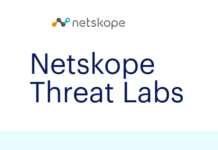
In today’s rapidly expanding digital landscape, the security landscape for businesses is constantly shifting. As companies grow, the complexity and volume of threats they face evolve, making the need for adaptable security measures more crucial than ever. Protecting sensitive information and maintaining customer trust is paramount, requiring a strategy beyond adding more security tools.
It demands a comprehensive approach where security measures scale in tandem with the business. Within this framework, incorporating Data Protection as a Service is a flexible and efficient solution to protect data across diverse platforms and locations, ensuring your security posture is robust and adaptable.
Learn how to develop a scalable security strategy to protect your business’s future by reading on for essential insights.
Understanding Scalable Security
Scalable security is essential for businesses aiming to grow safely in today’s digital landscape. It ensures that security measures evolve with your company’s expansion, safeguarding against increased risks without hindering operational efficiency.
Below are key insights into making security scalable:
- Adaptability to business growth: Scalable security systems must flexibly adapt to changes in your business size and complexity. This adaptability means security measures expand in scope and sophistication as you enter new markets or grow your online presence.
- Flexible security policies: Implementing policies that adjust to varying business activities and risks is crucial. These policies should be designed to scale up or down based on real-time business needs and threat landscapes.
- Infrastructure scalability: A well-designed security infrastructure avoids growth-related bottlenecks and vulnerabilities. This includes scalable network defenses, data protection capabilities, and threat detection mechanisms that accommodate increased loads and complex scenarios.
- Support for long-term growth: Scalable security is a foundational element that supports immediate needs and long-term business resilience and growth. It’s about preparing your business to face future challenges confidently.
Scalable security is a strategic component that underpins your business’s ability to grow and adapt in a rapidly changing digital world. It’s about ensuring that your security posture is robust, flexible, and capable of evolving with your company’s needs.

Assessing Your Security Needs
A thorough assessment of your current and future security needs is indispensable to tailor a security strategy that grows with your business. This process highlights the areas that require immediate attention and anticipates future security demands.
Below are essential steps to guide this assessment:
- Identifying critical data and assets: Pinpoint which elements of your business are indispensable and would cause significant disruption if compromised. This step focuses on understanding what needs the most protection, be it customer data, intellectual property, or financial information.
- Evaluating potential risks and threats: Analyze the threats particular to your sector, including common cyberattacks experienced by similar-sized businesses. This evaluation helps you understand the specific security challenges you may face and tailor your defenses accordingly.
- Reviewing compliance and regulatory standards: Given the complexity of legal requirements across different regions and industries, it’s critical to identify which regulations impact your operations. This involves understanding current laws and preparing for future regulations that could affect your business.
Systematically addressing these areas gives you a detailed insight into your security posture and its gaps. This clarity is crucial for developing a security strategy that addresses current vulnerabilities and is flexible enough to adapt as your business and the threat landscape evolve.
Implementing Layered Security Measures
In cybersecurity, a layered approach is akin to building a fortress around your digital assets. This strategy employs multiple lines of defense to protect against various threats.
Here’s a closer look at the essential layers:
- Firewalls and intrusion detection systems: These act as the first line of defense, monitoring incoming and outgoing network traffic. Firewalls enforce rules about what traffic is allowed, while intrusion detection systems scan for suspicious activities, alerting administrators to potential breaches.
- End-to-end encryption: Safeguarding data in transit and at rest ensures that it remains unreadable to unauthorized users even if data is intercepted. This layer is critical for protecting sensitive information from being exposed.
- Multi-factor authentication (MFA): MFA adds verification steps for users accessing your systems, significantly reducing the risk of unauthorized access. By requiring a combination of something the user knows (a password), something the user has (a security token), and something the user is (biometric verification), MFA makes it much harder for attackers to gain entry.
Implementing these measures creates a robust security framework that significantly reduces your vulnerability to cyber threats. Each layer addresses different potential attack vectors, ensuring that if one defense is compromised, others still stand to protect your assets.
Conclusion
Building a scalable security strategy is vital for any business thriving in the digital age. Companies can create a dynamic security posture that grows alongside them by prioritizing adaptability, assessing unique security needs, and implementing a layered defense system. This approach safeguards against current threats and prepares organizations for future challenges, ensuring long-term resilience and trust. As the digital landscape continues to evolve, so should your security strategies, making scalable security not just a goal but a continuous journey toward safeguarding your business’s future.


















